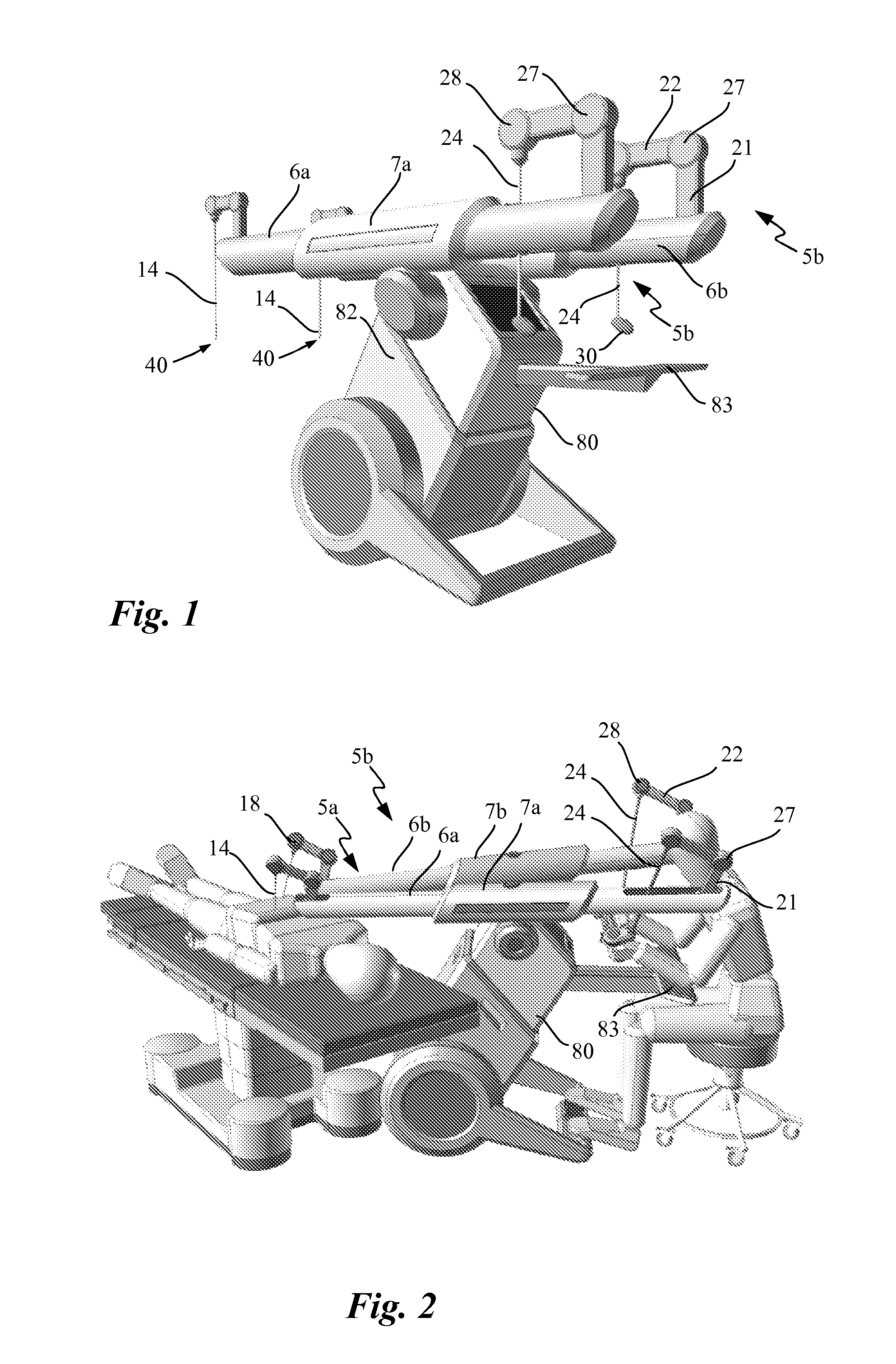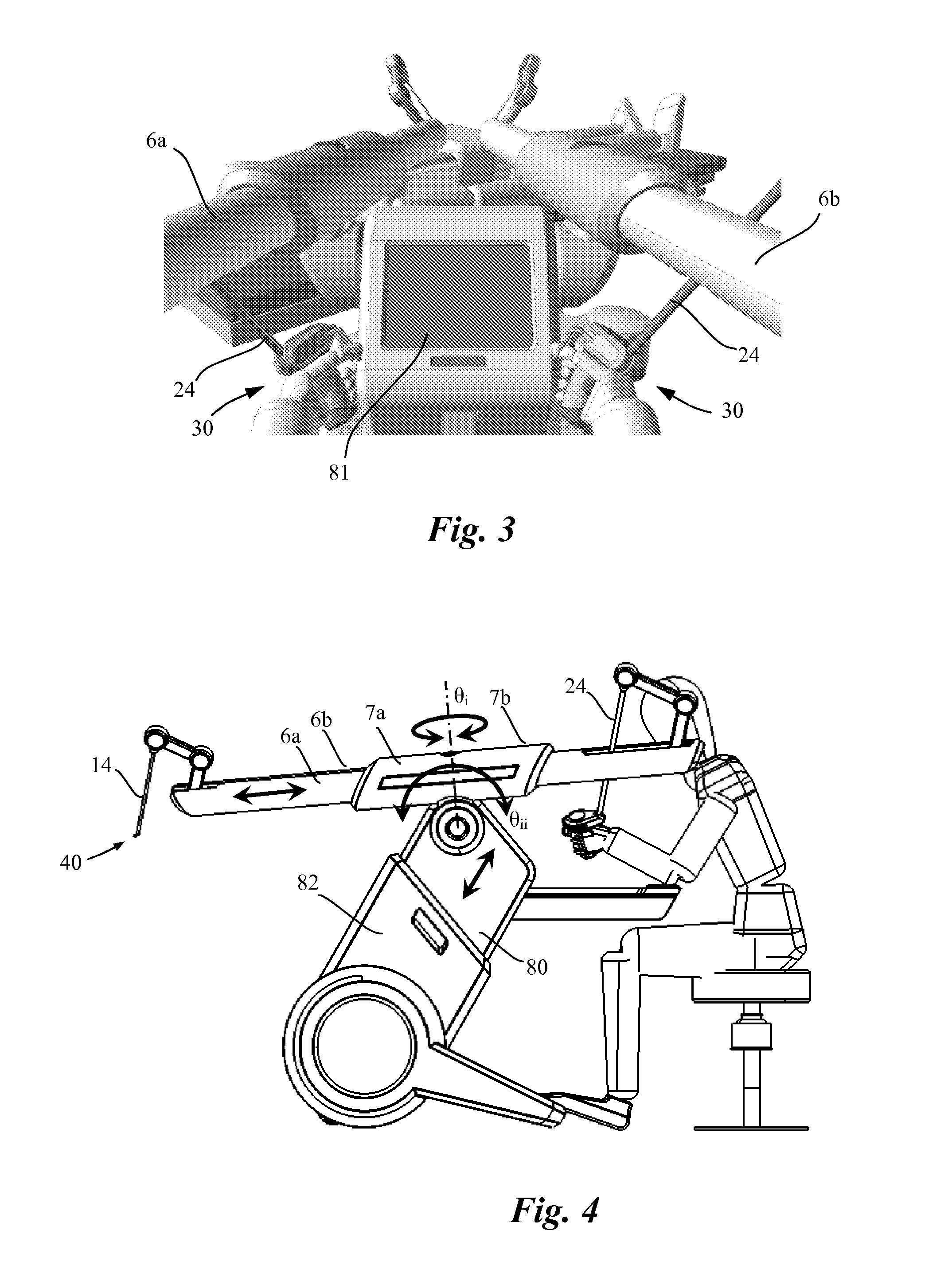Mechanical teleoperated device for remote manipulation
a technology of remote manipulation and mechanical equipment, which is applied in the direction of program control, surgical forceps, instruments, etc., can solve the problems of long recovery period, long recovery period, and inability to operate with minimal invasiveness, and achieves convenient use, less invasive surgery, and reliable
- Summary
- Abstract
- Description
- Claims
- Application Information
AI Technical Summary
Benefits of technology
Problems solved by technology
Method used
Image
Examples
Embodiment Construction
[0079]A teleoperated surgical device for minimally invasive surgical procedures, constructed in accordance with a preferred embodiment of the present invention, is described herein, and is seen generally in FIGS. 1 and 2. This device includes preferably two identical mechanical teleoperated devices 5a, 5b configured to be operated independently from the other, and comprising each seven independent degrees of freedom. (in total, the system has eight degrees of freedom, but one of them is redundant). These two mechanical teleoperated devices 5a, 5b are respectively mounted partly inside a first and a second housing 6a, 6b which are substantially parallel to each other although the angle between them can be tuned.
[0080]With reference to FIGS. 2 and 3, the surgeon will perform the procedure directly manipulating two intuitive handles 30 in the proximal part of the teleoperated surgical device viewing the operation through an endoscopic vision system. The movements applied by the surgeon...
PUM
 Login to View More
Login to View More Abstract
Description
Claims
Application Information
 Login to View More
Login to View More - R&D
- Intellectual Property
- Life Sciences
- Materials
- Tech Scout
- Unparalleled Data Quality
- Higher Quality Content
- 60% Fewer Hallucinations
Browse by: Latest US Patents, China's latest patents, Technical Efficacy Thesaurus, Application Domain, Technology Topic, Popular Technical Reports.
© 2025 PatSnap. All rights reserved.Legal|Privacy policy|Modern Slavery Act Transparency Statement|Sitemap|About US| Contact US: help@patsnap.com



